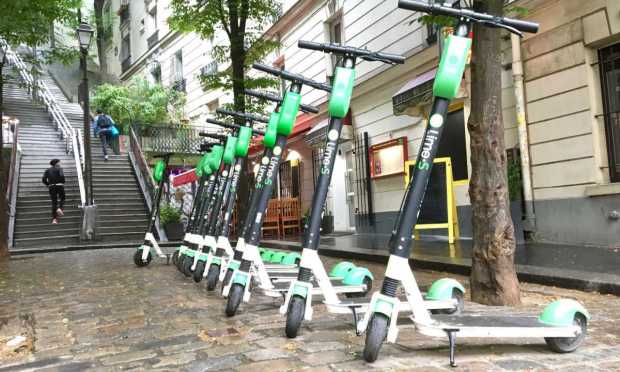Tougher eScooter Rules in Paris Highlight Diverging EU Micromobility Approach

Paris micromobility firms have introduced new rules for electric scooters.
Following threats from city officials to not renew operating licenses next year due a lack of adequate safety measures in the capital, three eScooter operators — Lime, Dott and Tier — have all announced upgrades to their safety requirements.
Key among them is age verification to access the pay-as-you-ride scooters, which up until this month did not require evidence and was based on self-declaration. Now, however, users have to scan a photo of their ID on the companies’ apps as part of measures to enforce the ban on minors’ ability to rent.
Related: Rising Inflation Curbs Enthusiasm for Ride-Hailing, Micro-Mobility
The firms have also agreed to install license plates on their scooters in a bid to increase accountability for reckless driving and help law enforcement officers identify offenders.
For Lime, Dott and Tier, rolling out ID verification was relatively simple as similar rules are in place in other cities where they operate. In Lyon, for example, the two licensed operators in the city, Dott and Tier, started enforcing ID verification back in September.
Outside of France, stricter eScooter rules have been in place even longer.
In London, for instance, a full or provisional driver’s license is needed to rent electric vehicles (EVs), with license verification being one of the prerequisites firms must have to be granted a license to operate in the city. Those that do, the same three rental operators in Paris, have also had license plates installed on their scooter fleets since April.
As Tier’s general manager for the U.K. and Ireland, Georgia Yexley, confirmed in a PYMNTS interview, “You have to have a driving license to use one of our eScooters. You must go through mandatory safety training. We limit the speed on your first ride [and] we provide helmets to people.”
Watch the interview: UK eScooter Regs Create Micromobility Sector Opportunity, Uncertainty
Micromobility’s Place in Public Transport
Considered a relatively new phenomenon, micromobility schemes have swept across European cities in recent years, accelerated by demand for an alternative to the enclosed spaces common among many bus and metro networks during the pandemic.
But as the sector grows, city authorities are increasingly diverging in their licensing and broader safety requirements.
While the new rules in Paris align with stricter regulations in London, for example, the Netherlands has so far proven less open to electric scooters, shunning Lime and Tier’s scooter schemes to instead favor the pedal-powered eBikes offered by Amsterdam-based Dott.
Read also: Competition Grows in Crowded European E-Scooter Market as US Players Flood In
That being said, another Dutch company, Citysteps, has managed to convince authorities in Roermond and Waalwijk to give self-service eScooters a chance. With an alternative model that uses larger wheels to improve the vehicles’ balance, Citysteps’ scooters look more like bicycles than traditional scooters and may prove safe enough to allay Dutch policymakers’ objections.
Moreover, with EVs transforming the urban transport experience, cities like Amsterdam might not be able to hold out forever in the face of eScooters’ popularity.
As Tier’s Yexley noted, “people want to move in this way … people want to use light electric vehicles, they want to reduce their carbon footprint, but they also need low barriers to access to be able to do that.”
The way Yexley sees it, micromobility scooters have an important role to play as part of the modern public transport mix, and only by different providers working together alongside transport authorities can the safest regulatory and technological framework be achieved.
For all PYMNTS EMEA coverage, subscribe to the daily EMEA Newsletter.
